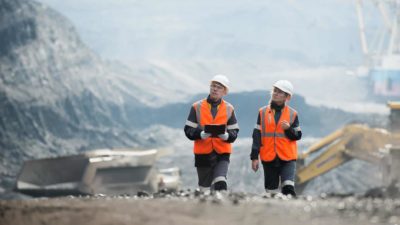The BHP Group Ltd (ASX: BHP) share price couldn't avoid the broader market selling pressures in the month just past.
But in some consolation for stockholders, shares in the S&P/ASX 200 Index (ASX: XJO) mining giant did significantly outperform the benchmark index.
BHP closed out February trading for $39.04 a share. When the closing bell sounded on 31 March, shares were changing hands for $38.20 apiece.
That saw the BHP share price down 2.2%.
While that's a sizeable one-month retrace, the ASX 200 itself fell 4.0% in March, closing yesterday at 7,843.4 points.
Most stocks (not just in Australia but across Asia, the US, and Europe) came under selling pressure amid ongoing geopolitical turmoil.
Russia's war in Ukraine still shows little sign of a resolution. And the Israeli conflict with Hamas and Hezbollah in the Middle East looks to be heating up once more.
Adding in US President Donald Trump's sweeping, and as yet not fully known, tariffs on the nation's global trading partners, and there was no shortage of uncertainty for investors in March.
As for BHP specifically…
BHP share price gets some commodity reprieve
The BHP share price received some support in March from a relatively strong iron ore price and a rising copper price.
Iron ore – BHP's top revenue earner – ended February at US$106 per tonne and closed out March at US$102 per tonne. While the price of the steel-making metal dipped, it held above the psychologically key US$100 per tonne range, and traded well above BHP's costs to produce it.
Looking ahead, Goldman Sachs said in March that it expects iron ore prices will fall to US$85 per tonne by the fourth quarter of 2025.
Copper – BHP's number two revenue earner – had an even stronger month. The red metal ended February trading for US$9,358 per tonne and closed out March at US$9,794 per tonne, up 4.7%.
Both industrial metals, and the BHP share price, look to have caught some tailwinds from China.
Early in March, the Chinese government announced an ambitious 2025 economic growth target of 5%. The government aims to boost domestic consumption and infrastructure spending, which requires plenty of steel and copper.
Passive income investors receive BHP dividends
March also saw BHP pay out its fully franked interim dividend of 78.5 cents a share.
If you owned the ASX 200 mining stock on 5 March, you should have received that passive income payout on 27 March.
BHP traded ex-dividend on 6 March.
Now if we add that 78.5 cents back into the BHP share price at market close on 31 March, then the accumulated value of the shares bought at the end of February would be worth $38.985 apiece.
Which puts the dividend-adjusted BHP share price down a slender 0.1% in March.







